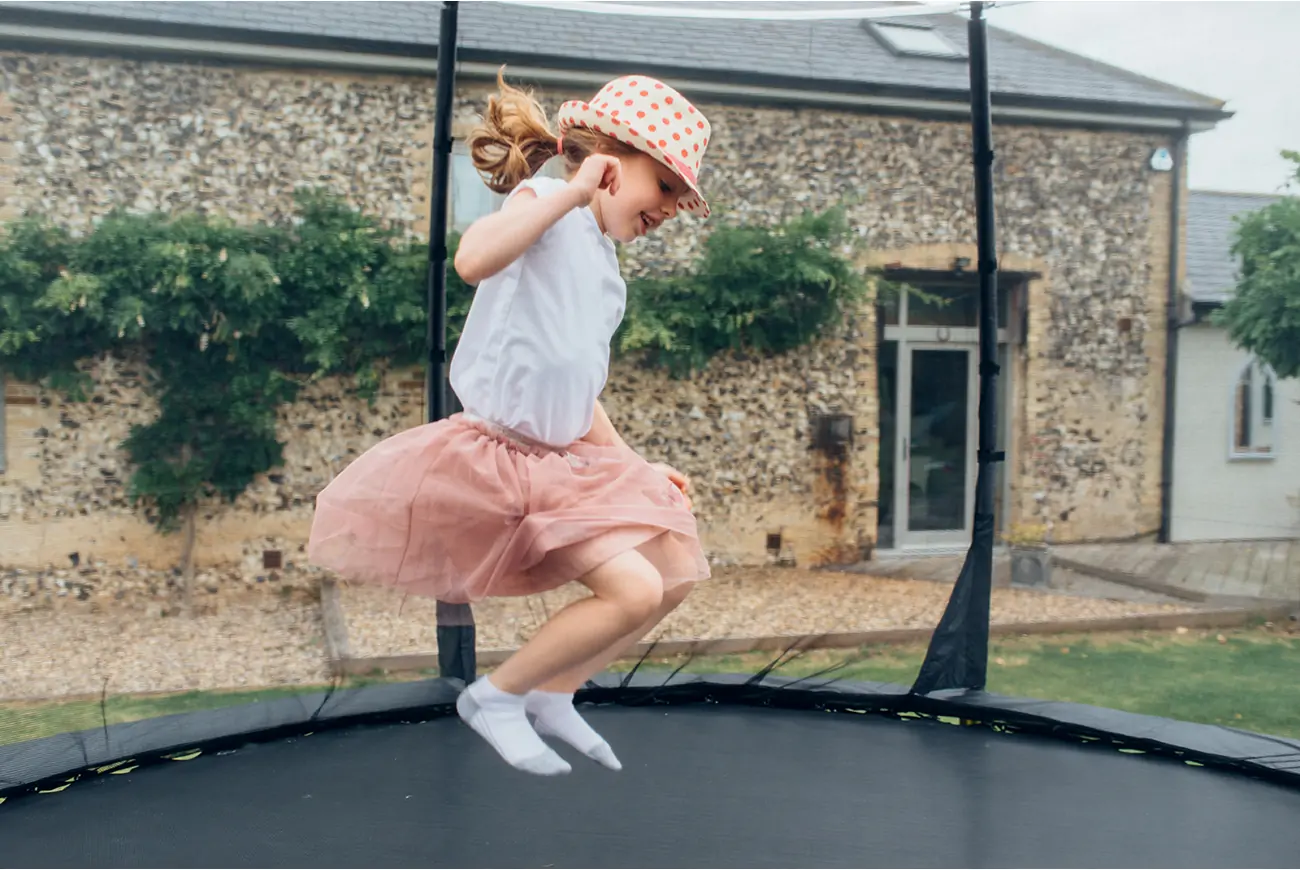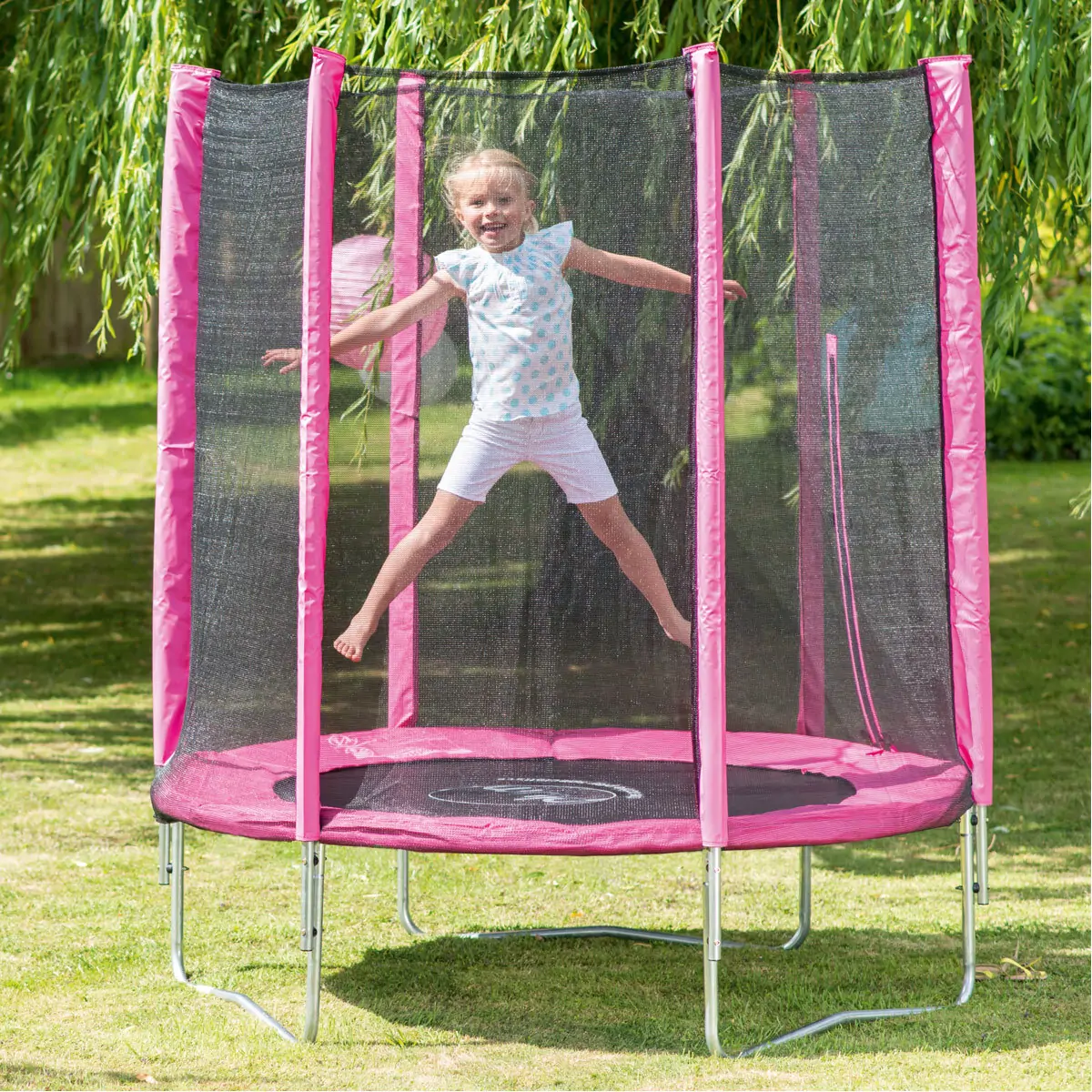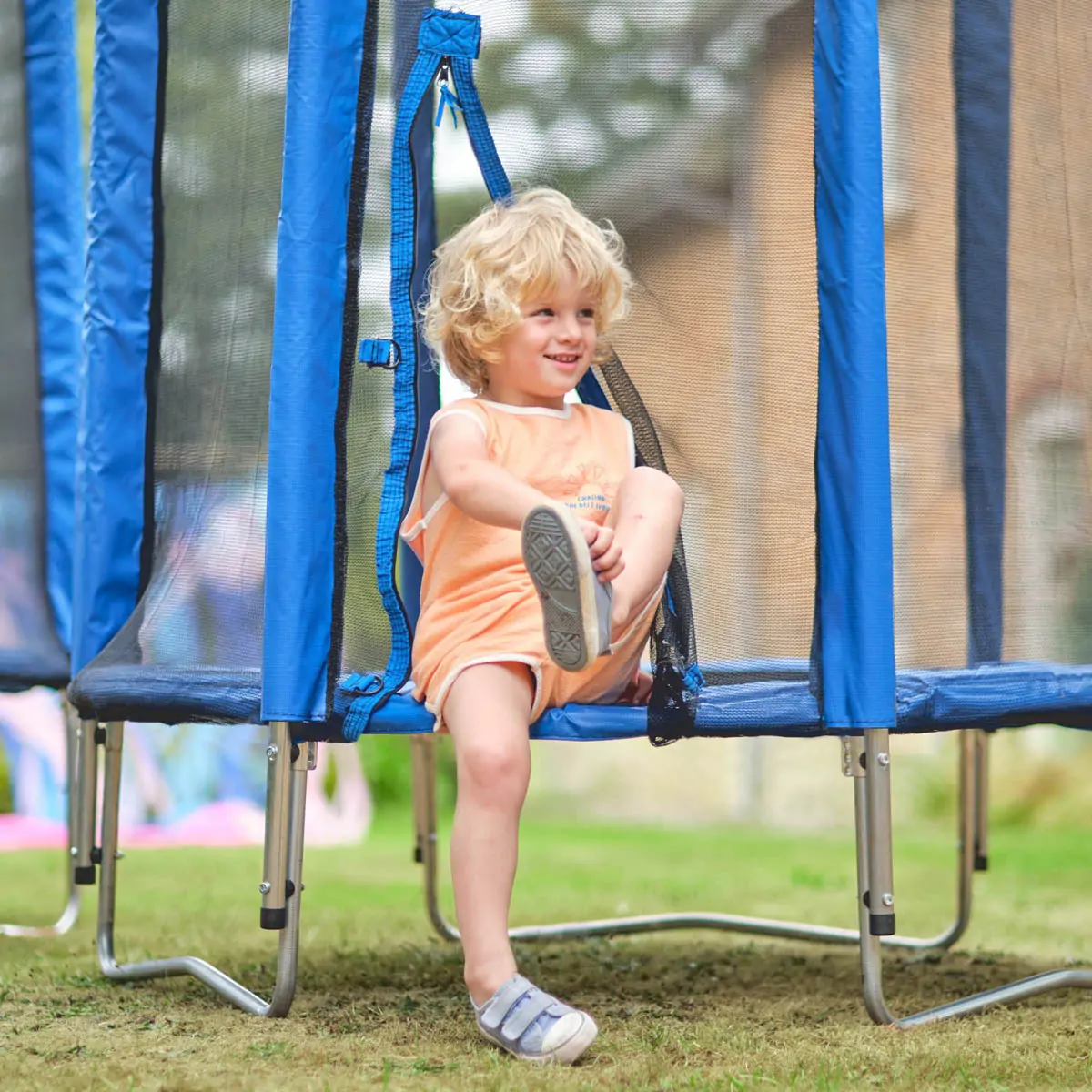Trampoline Care Guide: Cleaning and Maintenance Tips
5 min read
Last Modified 28 August 2024 First Added 20 June 2024

Trampolines are an excellent addition to the garden, providing hours of active fun that kids (and adults) can’t get enough of. However, they require some maintenance to ensure they stay safe and can be enjoyed for years. Proper cleaning and checks can extend the lifespan of your trampoline and prevent an expensive replacement from popping up. With that said, let’s run through how to take care of your trampoline all year round.

Since trampolines are kept outside, they tend to get dirty quite fast, especially on those rainy days. We recommend cleaning your trampoline every couple of weeks, but you may need to spot clean in between to get rid of leaves, twigs, and other debris.
Luckily, it’s quite easy to clean a trampoline, but it can be a big job. If your children are old enough, then delegating some cleaning tasks can be a great way to teach them about responsibility and looking after the things they love!

To keep your trampoline in tip-top shape, you should be checking it over regularly to spot any wear or potential damage. Here’s a quick rundown of what to look for and how often.
While it’s unlikely that a trampoline will deteriorate quickly, it’s still important to always check it over before every bounce session. This just ensures that everyone is safe and secure, and reduces the likelihood of accidents.
You should always supervise children playing on a trampoline, and we recommend teaching them what to look out for so they can tell you if they notice any issues.
Every month, you should perform a more in-depth inspection of your trampoline to check all of the components are safe and functioning properly.
During the colder months of autumn and winter, you’ll probably find the trampoline needs a bit more attention. When the weather gets wetter, there may be more mould build-up, especially if the trampoline isn’t used as often. Here are some of our top survival tips for winter:
Yes! Although most kids probably won’t want to bounce as much during the chilly season, they can still use the trampoline. Just make sure to sweep off any snow and try to dry the mat as much as possible before they play.
A high-quality trampoline will be built to withstand the elements, so you don’t need to worry about leaving it out all winter as long as you keep up regular cleaning and checks. However, if the trampoline definitely won’t be used or is a cheaper model, then you might want to take it apart and store it inside until sunnier days.
A good trampoline can last up to ten years, depending on the manufacturer. However, you may find that you need to replace some of the components before them to keep your trampoline going. The mats and springs can be very durable, but they need proper maintenance and cleaning to get the most out of them. However, you can replace these if needed, so there’s no need to get a whole new trampoline if the mat needs to be patched up or you lose a spring.
If there are multiple issues with the trampoline, such as structural wear, worn out/creaky springs, sagging mat, and instability, then it is probably time to invest in a newer model. You can browse our range of trampolines to find different sizes and shapes from trusted brands.
Check out our trampoline safety tips to learn more about choosing the right trampoline and how to encourage safe bouncing.
Read our disclaimers.